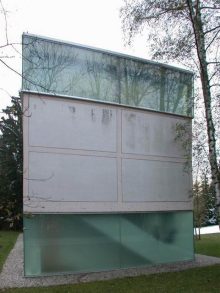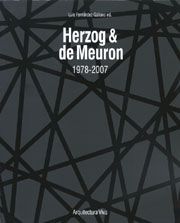
Galerie Goetz

 |
"… považuji tyto prestižní budovy (musea), které všude vznikají a stojí, za od počátku špatné. Zaprvé jde o problém ideový. Dům samotný je považován za obdivovaný kultovní objekt, ve kterém je umění degradováno na vyplňující funkci. V ideálním případě bude konkurovat a demonstraci moci přenechá architektuře, protože architektura chce sama být obrazem".
H.Federle, Werk, Bauen und Wohnen, č.1/2 1994
"Musea se pokoušejí být umělečtější než umění v nich." Markus Lüpertz, Kunst und Architektur, Frankfurt 1985
The gallery is a free-standing volume situated within a park-like garden of birches and conifers and between the street and the house from the 1960s. Thus the building can he used both as a public as well as a puely private gallery; a rule that is to be settled in the future. The building's architectural conception correspondes to the character of the wrorks that the collector has brough together over the last 30 years, embracing the art of the 1960s to today: Nauman, Ryman, Koune- liis, Federle, Rückriem and others.
A timber configuration rests on a reinforced-concrete base of the same dimension, that is half buried so the: only its upper glazed perimeter is visible from the outside. A similar matt glass strip surrounds the timber volume at the uppermost section, admitting diffuse glare-free daylight from a height of four metres into the exhibition spaces. The walls within the exhibition spaces are berween four to five and a half metres high. Two reinforccd-concrete tubes are set laterally between ihe lower and uppcr galleries. The larger of the two serves as the office and reception. Depending on the daylight conditions and the point of view of the observer, the gallery appears either as a closed, flush volume consisting of related materials (birch plywood, matt glass, untreated aluminium) or as a wooden box that, restin on two trowels, has come to rest in the garden.
0 comments
add comment










